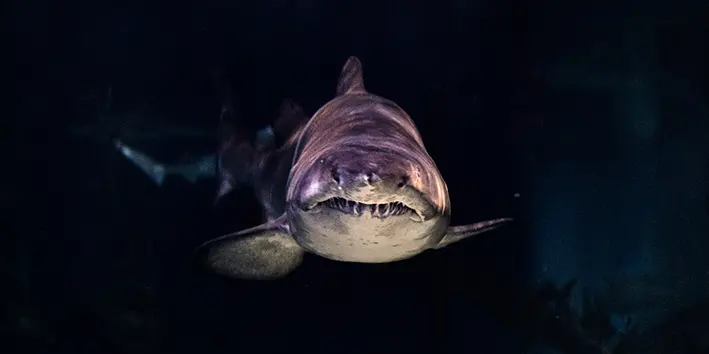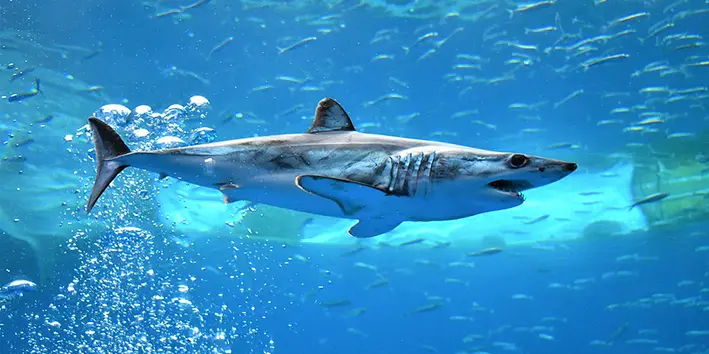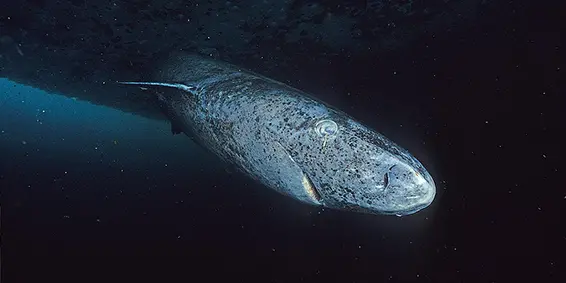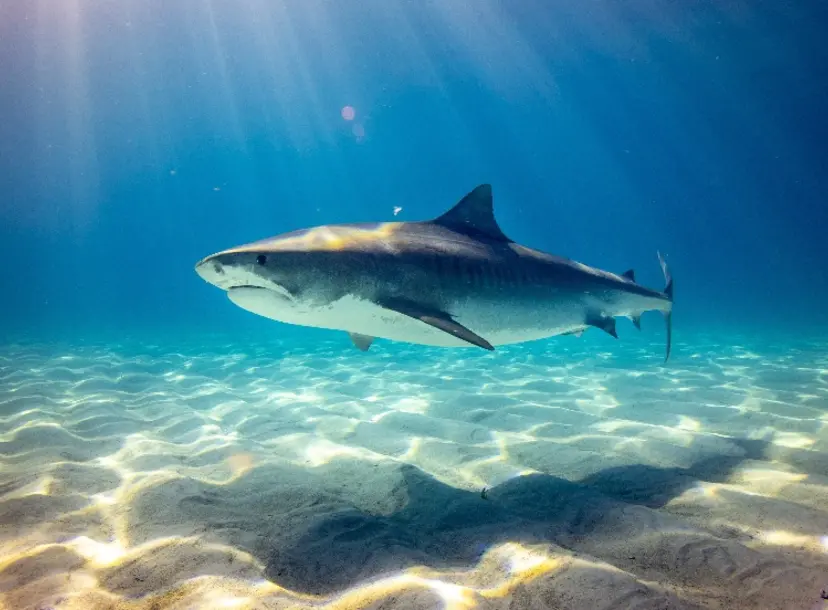Sharks don’t have bones
Instead of bone, they have cartilage, the same thing that humans have in their ears and noses, which is much more malleable than bone. This makes sharks extremely flexible – so flexible that if you grab a shark by the tail, they can still turn around and bite you!
Sharks can sense electromagnetic fields
Sharks have an incredible sense that humans don’t – the ability to sense electromagnetic fields. This means they can sense the electric field given off by the beating heart of their prey, even under sand or mud. Just part of what makes them such excellent hunters.

Sharks are amazingly biodiverse
Sharks come in every shape, size and colour you can imagine. The smallest shark is the size of your forearm and the largest is the size of a bus. There’s a new species of shark, skate, ray or chimera discovered somewhere in the world every two weeks – and that’s been true for the last 12 years!
Sharks can glow in the dark
The megamouth shark is just one shark with this cool ability. It lives in the deep sea and has has glow in the dark gums, to encourage fish to swim up to the light and into the mouth of the waiting shark. This species was only discovered in 1976 because a US Navy vessel accidentally hit one with an anchor!
Some sharks are incredibly fast
A large, predatory shark that lives in the open ocean, the shortfin mako is the fastest shark in the world. It can swim at an incredible top speed of 46 miles an hour!

Sharks can reproduce in multiple different ways
There are ten known reproductive variations within shark. Some sharks give birth like live mammals, and some lay live eggs. Some sharks can even clone themselves. Some sharks have multiple paternity, which is when a female shark will mate with multiple males, become pregnant by several of them simultaneously, and then give birth to a litter of half siblings. Some sharks can even clone themselves.
Baby sharks are immediately independent
Forget what you know from the song - when a baby shark is born, it's completely on its own, and has to fend for itself. There is no mummy or daddy shark around to help!
Greenland sharks are the slowest-moving large animal in the ocean
They aren’t in any particular hurry, as they can live for up to 400 years. They are the longest-lived vertebrate animal on land or sea, and they even snack on polar bears.

Why sharks matter - with David Shiffman
Watch our lecture with marine conservation biologist David Shiffman for a discussion on why sharks are some of the most fascinating, most ecologically important, most threatened, and most misunderstood animals on Earth.
